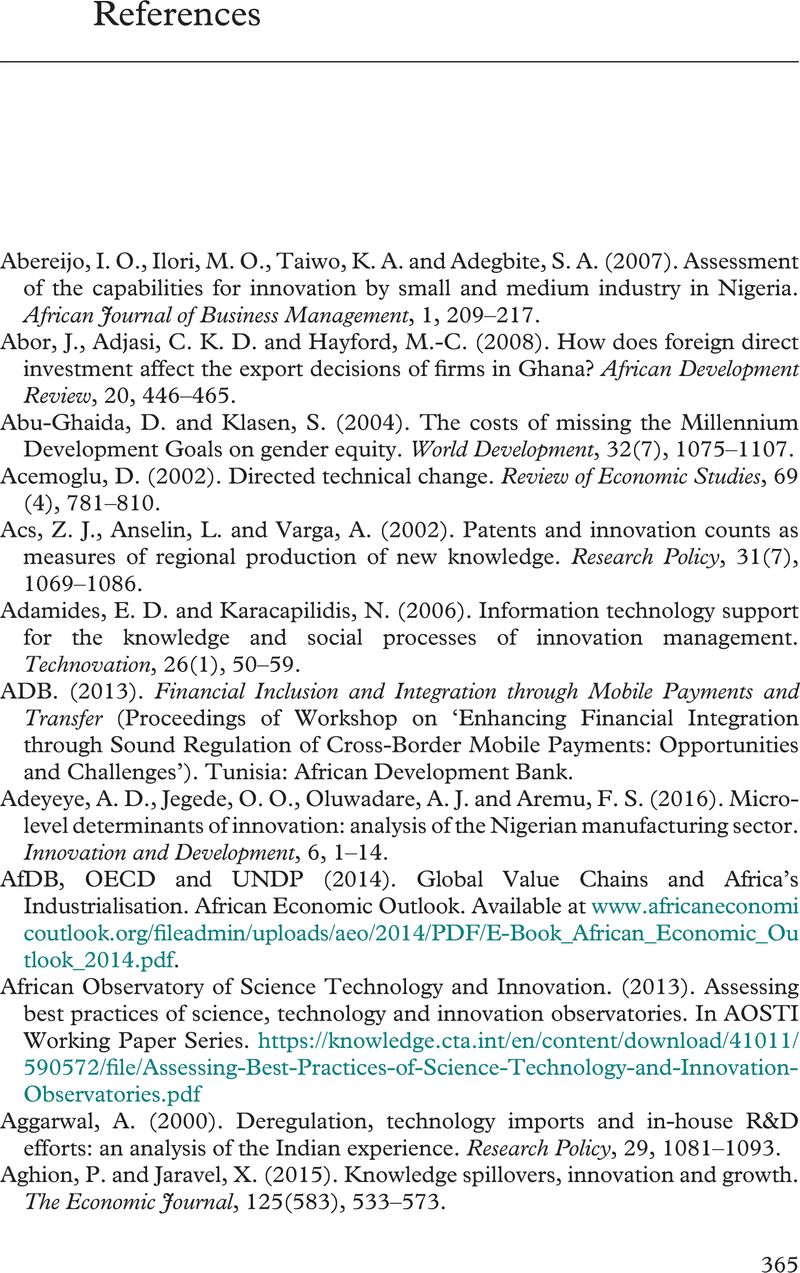Book contents
- Innovation under the Radar
- Innovation under the Radar
- Copyright page
- Dedication
- Contents
- Figures
- Tables
- Foreword
- Acknowledgements
- 1 Introduction
- 2 Innovation in Low-Income Countries
- 3 The Economy of Ghana and Tanzania
- Part I The Nature and Domestic Sources of Innovation in Africa
- Part II The Diffusion of Foreign Innovation into Africa
- Part III Emerging Technologies and Innovation in Africa
- Book part
- References
- Index
- References
References
Published online by Cambridge University Press: 27 November 2020
- Innovation under the Radar
- Innovation under the Radar
- Copyright page
- Dedication
- Contents
- Figures
- Tables
- Foreword
- Acknowledgements
- 1 Introduction
- 2 Innovation in Low-Income Countries
- 3 The Economy of Ghana and Tanzania
- Part I The Nature and Domestic Sources of Innovation in Africa
- Part II The Diffusion of Foreign Innovation into Africa
- Part III Emerging Technologies and Innovation in Africa
- Book part
- References
- Index
- References
Summary

- Type
- Chapter
- Information
- Innovation under the RadarThe Nature and Sources of Innovation in Africa, pp. 365 - 409Publisher: Cambridge University PressPrint publication year: 2020

